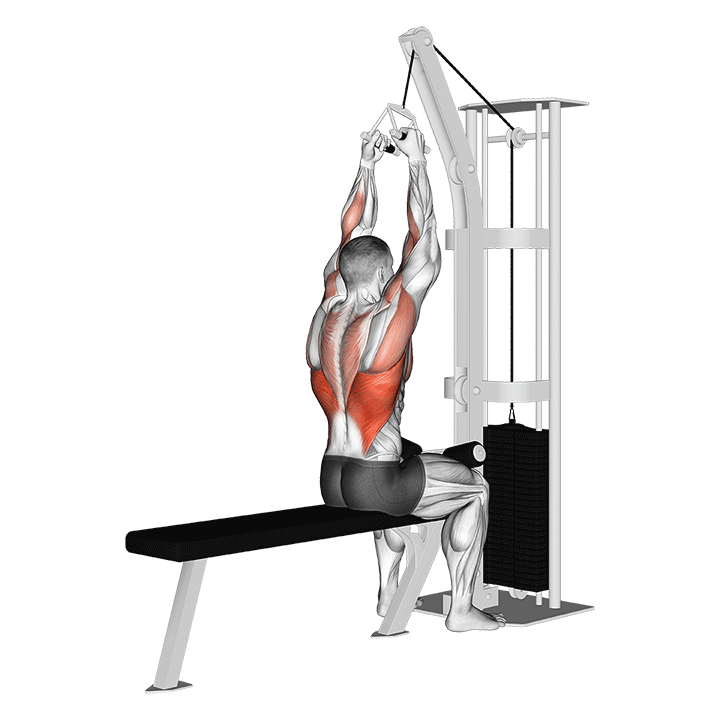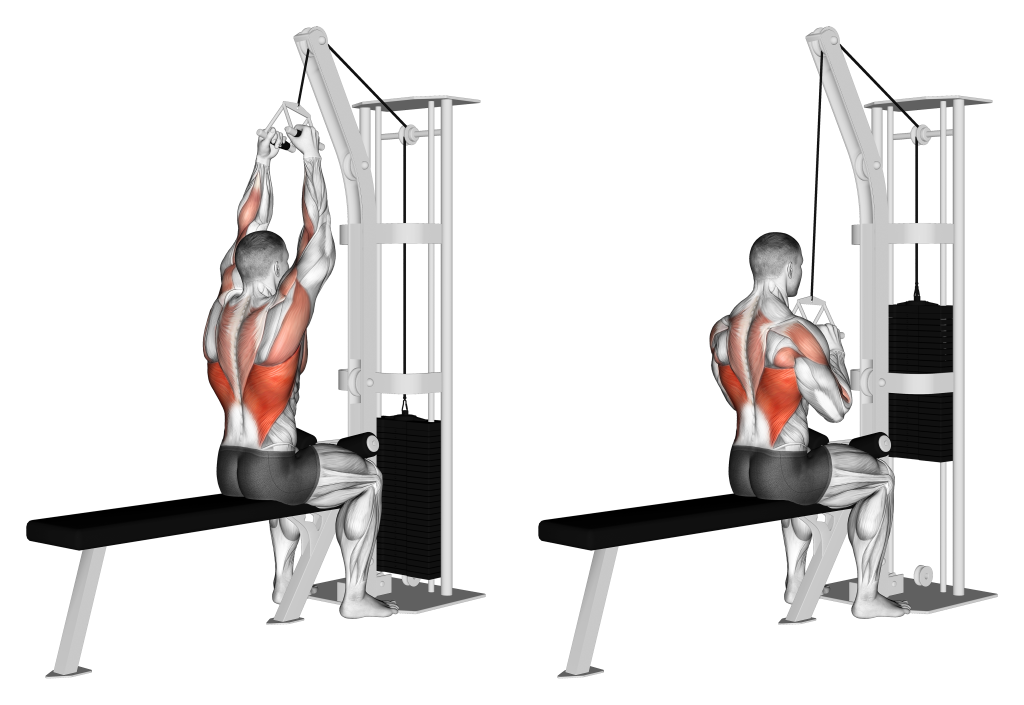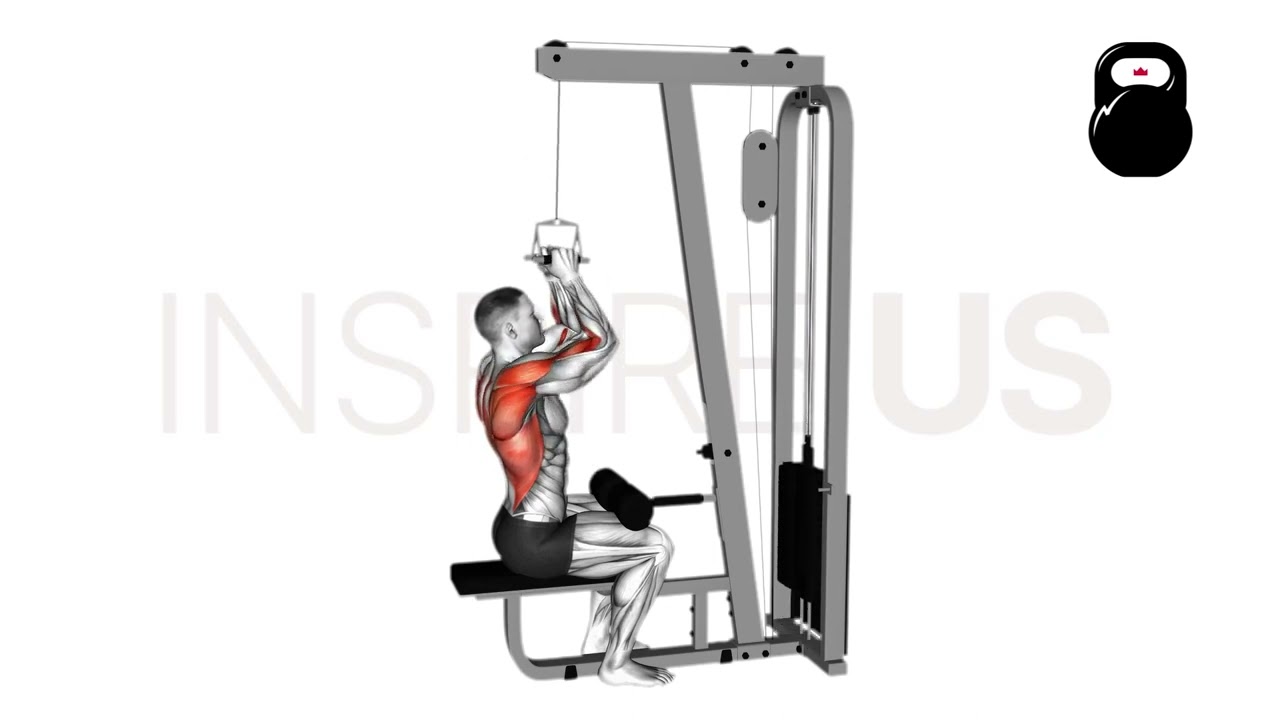V Grip Lat Pulldowns Exercise Overview: Muscles Worked and More
The V bar or V grip lat pulldown is a variation of machine lat pulldown involving a neutral, close hand positioning and somewhat altered range of action in the latissimus dorsi.
Like other forms of lat pulldown, the V grip variant involves significant scapular retraction and elbow flexion during the concentric phase.
The exercise itself is primarily used as a secondary compound movement for driving development of the middle trapezius, rhomboids and (particularly) the latissimus dorsi.
V Grip Lat Pulldowns at a Glance
Equipment Requirements
Lat Pulldown Machine, V Bar/Two D Handles/Similar Attachment
Main Muscles Targeted
Latissimus Dorsi, Traps, Elbow Flexors
Difficulty
Moderate
Sets, Reps, and Load Recommendations
3-4 Sets of 8-12 Repetitions at a Moderate Load
How to Do V Grip Lat Pulldowns
- To perform a repetition of the V grip lat pulldown, the lifter will begin by first seating themselves within the machine, gripping both handles of the V bar in a neutral grip. The arms should be set close together, extended upwards as the glutes rest flat atop the seat.
- Keeping the elbows close to the trunk throughout the set, the lifter leans back slightly as they pull the handle downwards towards their chest. The scapula must retract as they pull, the elbows pointing away from the body.
- Once the handle makes contact with the chest (or are beneath the chin), the lifter slowly disengages their scapula and allows the resistance of the machine to pull their arms back overhead - controlling the ascent as they do so.
- When the elbows are loosely extended upwards and the handle has returned to its original position over the lifter’s head, the repetition is considered to be complete.
Additional Tips:
Lifters may find that the usage of a V bar is restrictive to how well they can contract their lats during the upper range.
To correct this, adopting a slightly wider initial elbow positioning and ensuring that the scapula is retracted during the repetition is essential.
Another great tip for maximizing contraction of the back muscles is to lean the trunk slightly backwards at the hips - shifting emphasis away from the posterior deltoids and biceps.
What Muscles do V Grip Lat Pulldowns Work?
V grip lat pulldowns primarily target the the latissimus dorsi muscles, but will also work the rhomboids, posterior deltoid heads, the elbow flexor muscles (biceps, brachialis, brachioradialis) as well as the trapezius.

With so many muscles involved in its recruitment pattern, the V grip lat pulldown can effectively be considered a compound exercise.
Common V Grip Lat Pulldowns Mistakes to Avoid
Though the V grip lat pulldown is a relatively safe exercise, avoiding the following mistakes will help ensure the right muscles are targeted within the correct ranges. For a more efficient workout, correct them if present in your technique.
Pulling the Elbows Together
One of the most common mistakes seen with V grip (and other close grip) lat pulldown variations is lifters pulling their elbows together at the front of the trunk.
Apart from reducing the involvement of the latissimus dorsi, this can increase strain within the shoulder joint and rotator cuff - leading to impingement and similar injuries if done repeatedly. In addition, drawing the elbows together at the front of the chest will further limit range of motion on account of the narrow handle used.
To avoid doing so, the elbows should be angled so that they are pointing slightly out to the sides, ending with the forearms tucked against the sides of the trunk at the bottom of the repetition.
Failing to Retract the Scapula
Without engaging the scapula correctly, the V grip lat pulldown essentially turns into a form of hammer curl. Lifters should ensure that their shoulder blades retract as the handle is pulled downwards.
By the time the elbows have been pulled parallel to the sides of the ribs, the scapula should be fully pinched behind the body.
A good cue to follow is to lead the initial pull by the shoulder blades - initiating flexion of the elbows as a secondary action instead.
Excessively Vertical Trunk Angle
Much like failing to retract the scapula, performing the V grip lat pulldown with the trunk angled too vertically can reduce involvement of the mid-back musculature.

To help properly recruit these muscle groups, the torso should be leaned several degrees backwards with the hips, as if attempting to point the chest towards the cable pulley. Doing so will not only aid in proper muscular recruitment, but also help keep the elbows in the correct position as well.
Extending the Neck Forwards During the Negative
Though a rather small issue, extending the neck forwards as the arms raise overhead can compromise the position of the shoulders and potentially lead to issues of the trapezius muscles.
At all times, the head should remain behind the handle. The neck itself should be kept aligned with the rest of the trunk, held stationary throughout the set.
Who Should Do V Grip Lat Pulldowns?
The V grip variant of lat pulldown is excellent for lifters seeking hypertrophy of the middle and upper back musculature. With its relatively simple technique and inherent safety benefits, practically any lifter can master the exercise within a single training session.
However, those with a history of rotator cuff, shoulder joint or elbow injuries may wish to first speak to a medical professional prior to performing any form of lat pulldown.
References
1. Snarr, Ronald & Eckert, Ryan & Abbott, Patricia. (2015). A Comparative Analysis and Technique of the Lat Pull-down. Strength and Conditioning Journal. 37. 21-25. 10.1519/SSC.0000000000000173.

